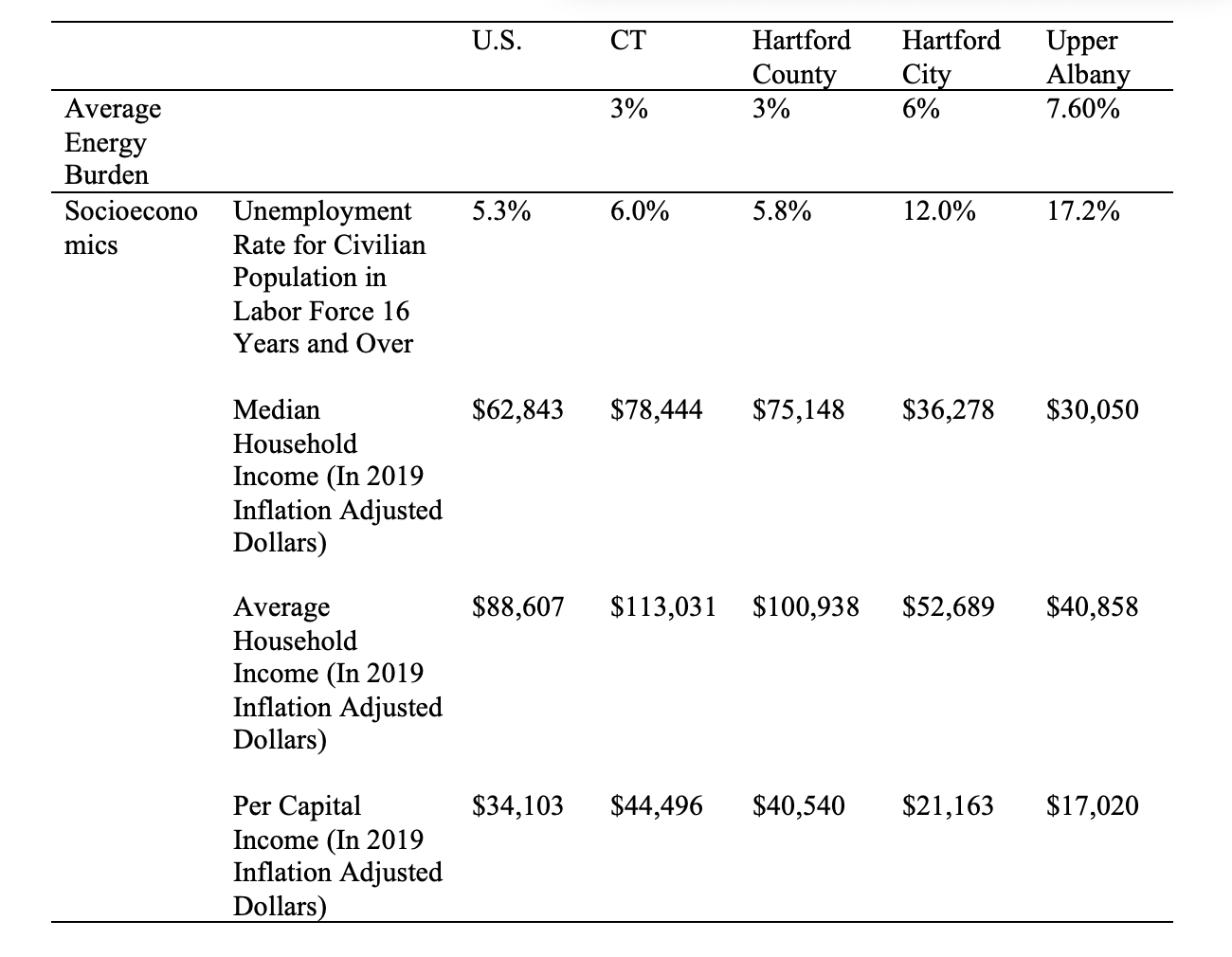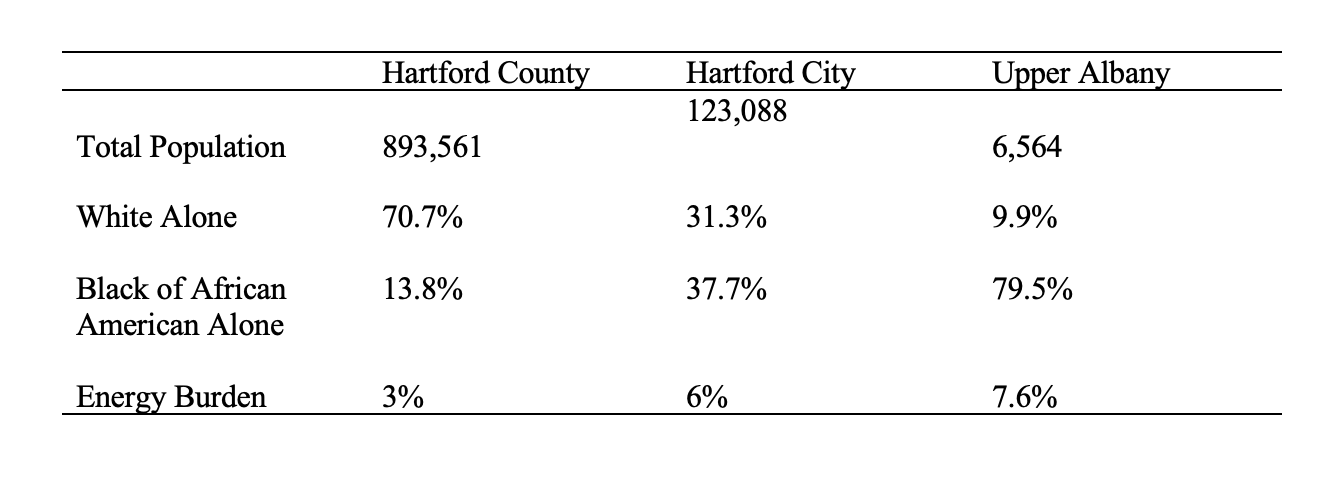Income
Energy Burden tends to affect people who already have low income. This is because it is a systematic problem. When we interviewed with energy expert Gannon Long on December 2nd, she talked about how many programs do not consider households for payment plans until they are in the emergency state of paying their bills.
Upper Albany has a high unemployment rate, low median household income, and low average household income and per capita income. The table below summarizes data from the 2019 ACS. The exposure of COVID19 among low-income households has not been presented. The low performance of income metrics of Upper Albany could have a driving effect on energy poverty and uplifting this high energy burden.

Renter and owner occupation
Households are mostly renter-occupied in Upper Albany according to housing units’ data collected LEAD Tool.
- If people do not pay their bills, then property owners will kick them out and they may have nowhere else to go
- Gentrification – property owners are just waiting for buildings to be updated – Bizzie talked about this on our tour of Upper Albany, we could actually see gentrification on sidewalks
- Apartment and rental prices going up
- People are being driven out of areas because they can’t pay taxes because they can’t pay bills
- Gannon Long talked about Energy companies like Eversource still make money even if people can’t pay their bills (monopoly) in our interview with them
- Interview with participant Doreen: said her property owner did not fix poor heating for years because he just wanted tenants to move out so the city would eventually update the property (said in the winter that there was only one comfortable room to live in), when it rained her ceiling leaked, not health living conditions

Upper Albany has a high ratio of renter-occupied housing compared to the state average of 33.9%, which is less than half of that of upper Albany. Corresponding with Hernandez’s explanation, tenants face a higher Energy Burden because landlords rarely spend money on innovating nor upgrading energy-saving applicants. It could be one of the reasons among renters at Upper Albany, leading to a 7.6% average energy burden.

Race

Upper Albany gathers a predominately non-white population. This racial inequality should be considered when discussing why Upper Albany and other neighborhoods near the North End of Hartford have a relatively high Energy Burden. Furthermore, when designing future energy plans and policy suggestions, this high Energy Burden and potential energy poverty of a single race should be concerned.
Health
Along with the economic burden, Energy Burden can seriously effect people’s health:
One of the most documented impacts of energy burden has been how it will create and exacerbate residents’ health issues. Often residents who face Energy Burden are also those living in poor housing stock with outdated space conditioning equipment and poorly insulated homes. A typical response to this can be to utilize inefficient and sub-serviced heating equipment. The combination of ineffective housing and poor heating systems will increase the risk of carbon monoxide poisoning, lead exposure, thermal discomfort, and respiratory illness (M.A. Brown, 2020). The increased likelihood for health complications as well would likely result in increased financial demand on residents who already struggle with energy burden to the additional costs of healthcare visits, medication, and other necessary expenses to support care. As well with the physical health decline associated with Energy Burden is the mental toll:
“Living with energy insecurity represents the consequences of stressors, fears and even mental health related to the inability to pay energy bills and the real potential disconnection of electricity and home gas heating utility services. These effects are amplified for groups vulnerable to additional underlying health issues combined with financial limitations” (M.A Brown, 2020, p. 3).
For those experiencing Energy Burden, their struggle is not only a financial one but also one that their health will depend on.
